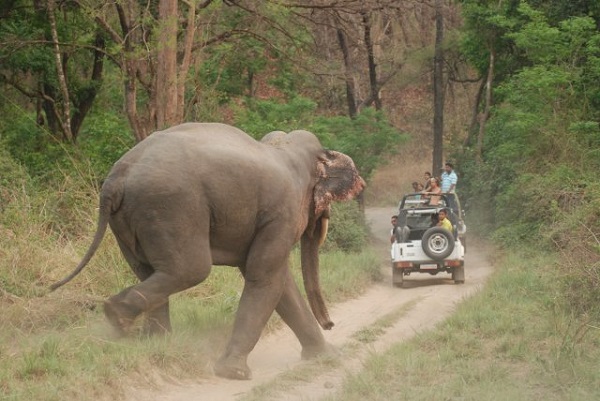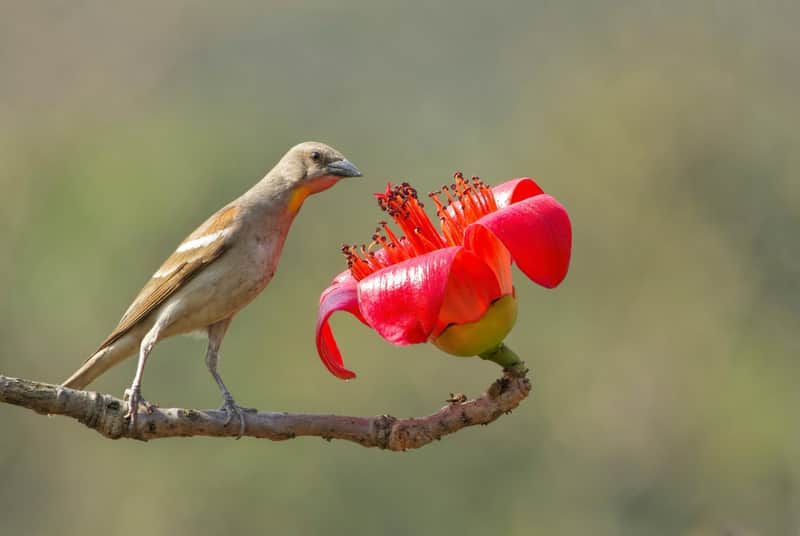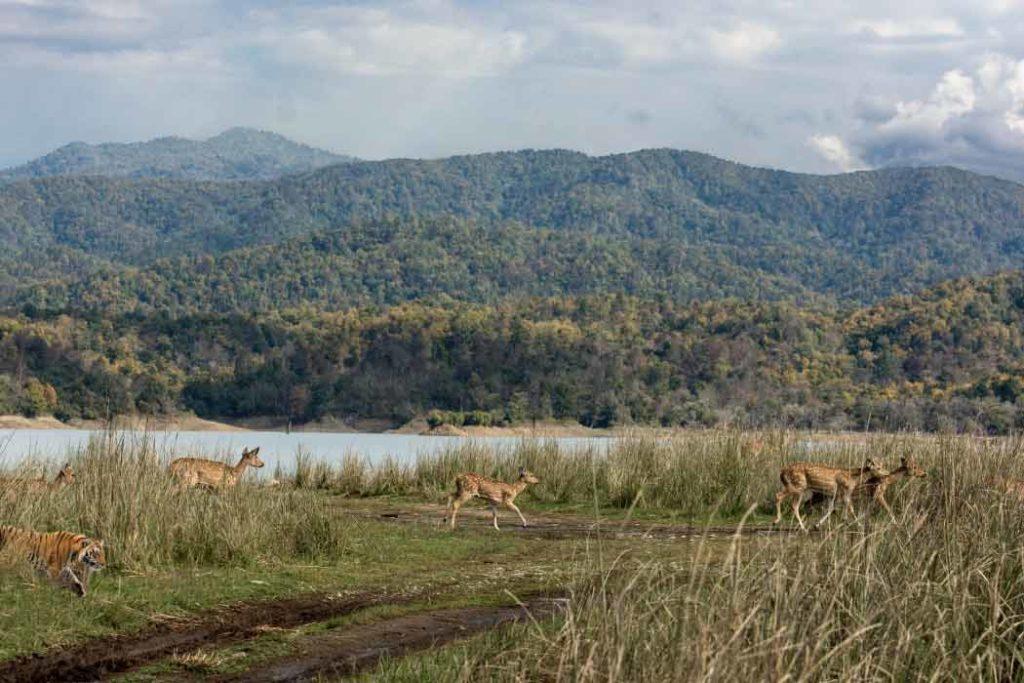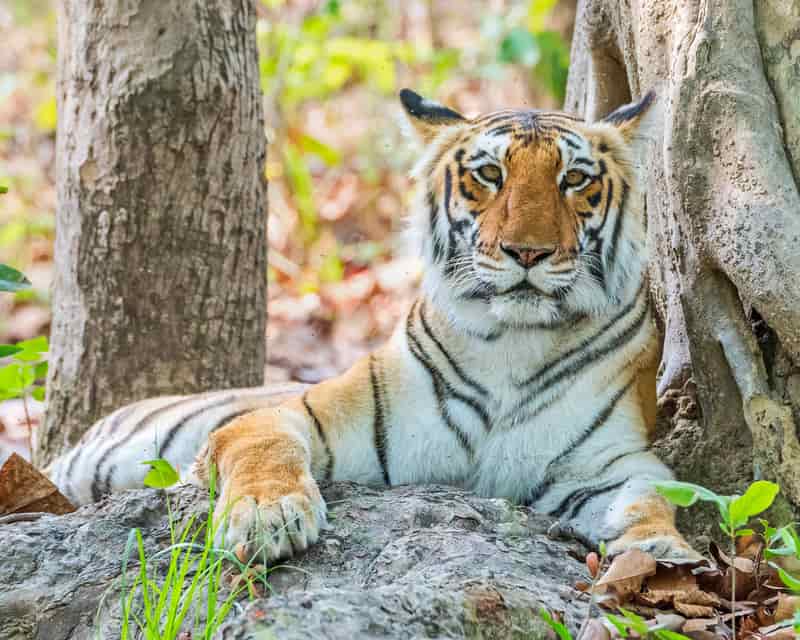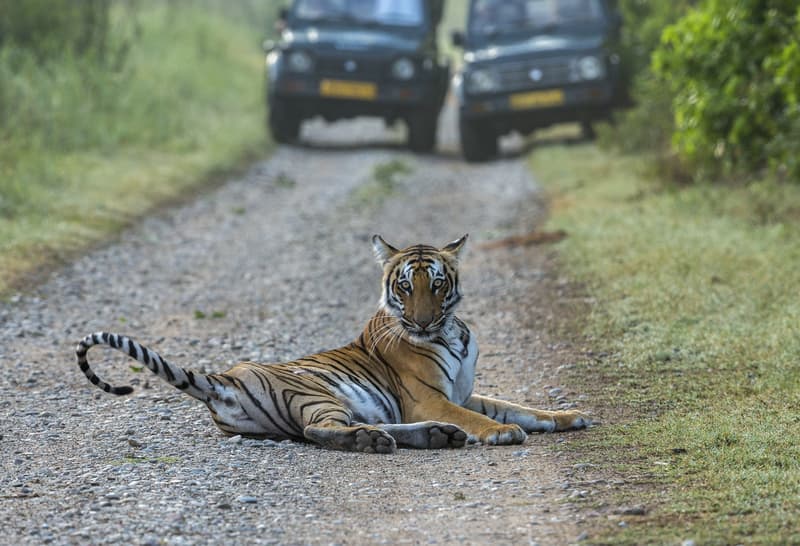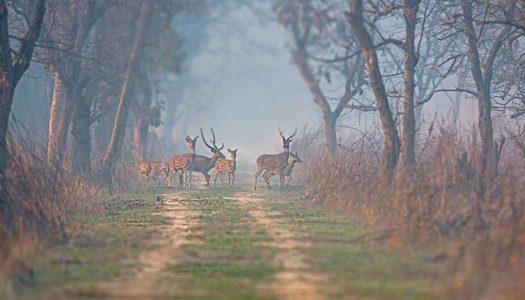Looking for information about Jim Corbett National Park? You have come to the right place! In this blog, you will learn everything from Jim Corbett’s history to its safari trips. Read on to find out!
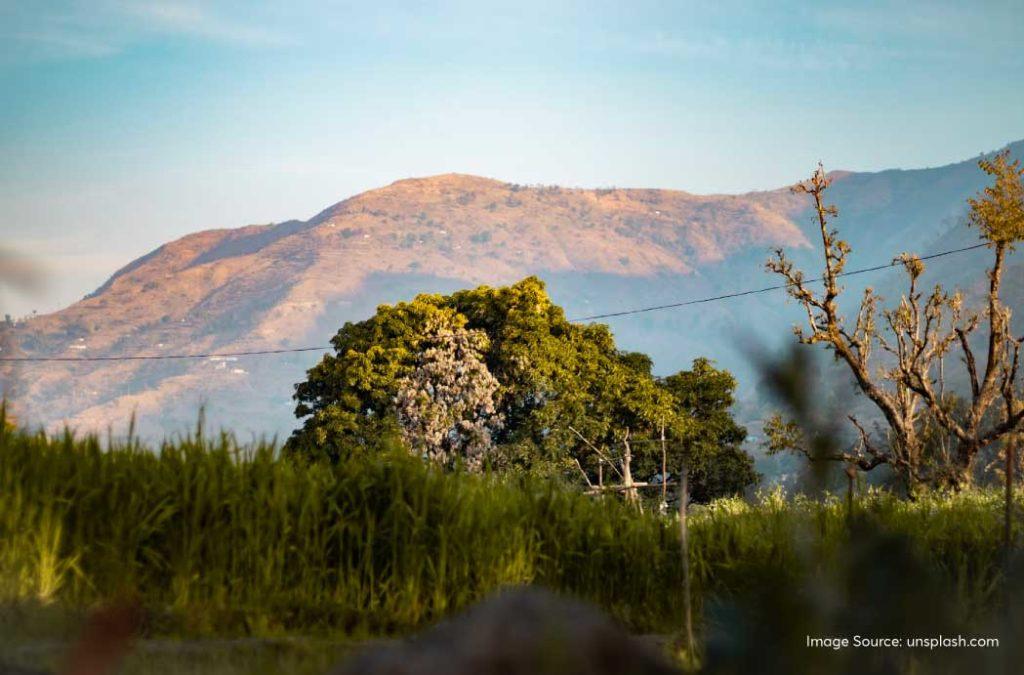
History of Jim Corbett
Jim Corbett National Park is one of India’s oldest conservation spots that is known for its enchanting beauty and raw wilderness. It dates back to 1936 as Hailey National Park. It originated from Tehri Garhwal’s land, ceded by its ruler to the East India Company in the 19th century. When the British took control in 1868, preserving the area from cultivation and introducing conservation became their prime agenda. They were successful in meeting their goal as well!

Elephants at Jim Corbett
But it was only in 1936 when Jim Corbett, a British-Indian conservationist, facilitated the demarcation of the land which ultimately led to the establishment of Hailey National Park in 1936. Whatever the British did to protect the lands only came crumbling down during World War II. The Indian government had to deal with stopping extensive poaching and timber cutting that was leading to the degradation of the fertile habitat.
Jim Corbett also housed Project Tiger and became part of WWF’s Terai Arc Landscape Program. And in 1956, it was renamed Jim Corbett National Park after the wildlife conservationist who was one of the main reasons for this land to flourish.
If you are planning to come visit this national park soon, book your stay at Treebo Hotels for a comfortable experience.
You May Also Like Reading: 15 Bird Sanctuaries in India: Avian Watcher’s Paradise
What is unique about Jim Corbett National Park?
Jim Corbett National Park in Uttarakhand is one of the biggest national parks to exist in the country. It has a main area of 520 square kilometres and the rest of the surroundings are declared buffers. The national park is also famous for housing the most number of tigers compared to the other national parks in India. When you come here to take a Jungle Safari, you can also stay overnight in accommodations here. This is undoubtedly going to be the best experience for you and your family!

Bird at Jim Corbett
With about 650 different species of fauna and birds, the national park is brimming with exemplary life and if you are lucky enough, you can even spot a Bengal Tiger on your safari trip. People who’ve been to this place before say that it is not possible to leave the national park without spotting at least one animal. So, this spot is definitely a treat for animal lovers!
As for nature lovers, your jeep trip is going to take you down lanes that are covered with canopies of emeralds, the sounds of cascading water, breathtaking views of waterfalls, and the subtle chirping of animals concealed by the hues of green. Now, imagine that! Splendid, isn’t it?!
When to Visit Jim Corbett National Park?
You can visit Jim Corbett National Park anytime during the year! However, how you plan your trip depends on your personal preferences and what you expect to gain out of your trip. This beautiful land which is not just a national park but a dominant tiger reserve appears differently in each season. Covering a vast area of Pauri Garhwal, Almora, and Nainital of Uttarakhand, this is where you can see the sub-Himalayan ranges towering over the wide-spread lands.

Deer crossing at Jim Corbett
Only the Jhirna zone of Jim Corbett National Park remains open to tourists throughout the year. However, the rest of the park is only open during the months of mid-November to mid-June. The Birjani zone of the park is opened a month early so you can visit that part if your trip is anytime during mid-October.
Winter Season
The winter period is between October and February. Nature lovers will enjoy visiting Jim Corbett National Park during this time. The trees retain their gorgeous green leaves, the twigs intertwine with the intriguing spottings of flowers here and there. The nights are undoubtedly chilly but the mornings are pleasant and peaceful. Bird lovers can spot several avians, including migratory species that grace us with their presence during winter. Also, the Bengal tigers and elephants come out to bask under the sun so you may even spot them!
Monsoon Season
Monsoon may not be the ideal time to visit Jim Corbett National Park. Seeing how the place is amidst hills and mountains, soil erosion and landslides are more common. But if you follow the weather and news properly, you can plan your visit at a time when the crowd is almost non-existent. The adventurous ones can also go on guided treks. Monsoon is believed to be the season when the animals want to stay close to their loved ones. So, you can expect to see a lot of mating activity.
Summer Season
Summer, which lasts from March to June, is one of the best seasons for tourists but we cannot say the same for the animals. The weather is scorching hot and the temperature can hit 40 degrees Celsius as well! The animals prefer to stay under the protection of the shady trees but they also come out hunting for water sources.
What can you spot in the Natural Wilderness?
The park’s rich biodiversity includes the majestic species of the Bengal tiger, for which the Jim Corbett National Park is famous. You will also come across other mammals like Asian elephants, leopards, sloth bears, and Indian pangolins. It is very common to see species of deer such as spotted deer, sambar deer, and barking deer.

A Royal Bengal Tiger inside the Jim Corbett National Park
Among the winged champions are the great hornbills, crested serpent eagles, Himalayan vultures, red junglefowl, and the pittas. Jim Corbett is especially famous for the population of waterfowl that often linger around the water bodies.
The place is also home to several reptiles and amphibians. In the Ramnagar River, you will find crocodiles and gharials. The species of slithering snakes like the Indian python and cobra are also not uncommon here. Moreover, if you look keenly, you might also spot some turtles and tortoises.
Whenever you spot an animal, make it a point to not make any kind of sounds, play music on your phone, or scream in terror when they start to get close. There will be a guide to take you through the forests and strictly follow their instructions to avoid mishaps. At the end of the day, we are visitors to the animals’ homes. We have to respect their rules!
Also Read: Natural Thermal Marvels: 15 Must-Visit Therapeutic Hot Springs in India
How to Book a Jim Corbett Safari?
Booking a safari by yourself is a tedious procedure and that is why tourists prefer to hire third-party agents who do the job for you at a pre-agreed price. However, if you would like to do things on your own, here’s how you should proceed.
Initially, visitors have to apply for a permit to enter Jim Corbett National Park and the forest department must approve your entry. You can easily get this from the official website – here. This is the only online platform that you can completely trust. In case of weather hurdles, you will also see notifications mentioning which zones and gates will remain closed and when.

Safari at the Park
For Indians, the booking opens before 45 days, and for foreigners, it would be 90 days. The sooner you show up to get your permit, the better your chances of actually getting one. During the peak seasons, people often struggle to get permits on their own.
Once you get the permit, the jeeps will also be assigned online. Once you reach your respective zone, guides are assigned at the gates. Know that travelling without a guide is strictly prohibited and you won’t be allowed to enter without a well-trained and certified guide. If you want to hire your own guide, that is fine as well. The safari jeep rent will cost you around 2800 INR and the assigned guide will take 800 INR.
The permit per jeep will cost 1,100 INR. There is an option to go on canter rides too! For this, you will have to pay 1300 INR for the permit.
What are the Different Safari Zones?
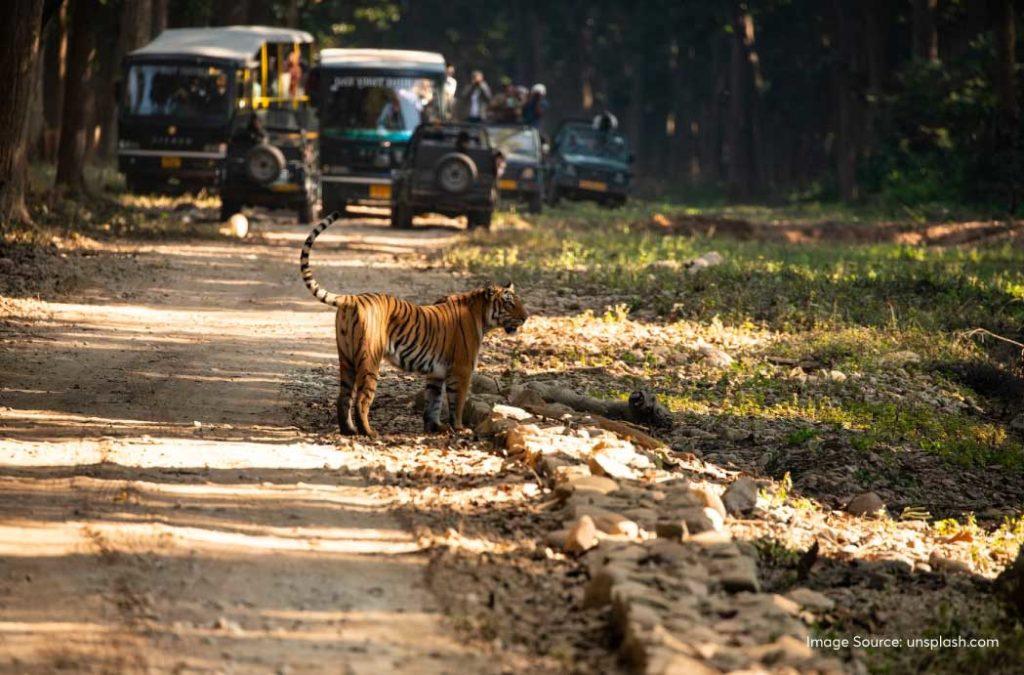
There are a total of 6 accessible safari zones in Jim Corbett National Park.
1 – Dhikala Safari Zone
The Dhikala Safari Zone is the most famous among the six other zones in Jim Corbett National Park. This route runs deep into the forest. There are high chances of spotting the Bengal tigers here. Also, you can see a lot of elephants and wild birds. The breathtaking landscapes are only the cherry on top of the cake!
2 – Jhirna Safari Zone
Jhirna Safari zone is mesmerising, thanks to its dense canopies that blend well with open grasslands. This is the second-best safari zone for a reason. This is the route where you are most likely to find a leopard, wild boar, or a group of deer enjoying their share of foliage. Bengal tigers are also found around this zone.
3 – Bijrani Safari Zone
The Bijrani Safari Zone in Jim Corbett National Park is the favourite of wildlife photographers. Along with the dense forests and open grasslands, you will also find cascading waterfalls. With a camera, you can capture the best landscapes. This zone is also popular for its frequent wild carnivore sightings. So, be careful to not use flash while clicking images.
4 – Durga Devi Safari Zone
Durga Devi is characterized by its tranquil and calm surroundings, rippling riverbanks, hills, and dense canopies of emeralds. This zone is renowned for its avian diversity, so bird lovers are definitely up for a treat.
5 – Dhela Safari Zone
The Dhela Safari Zone was added to Jim Corbett National Park pretty recently to reduce the tourist load on the other safari zones. You will most likely find nilgais, leopards, elephants, and deer here.
6 – Sitabani Safari Zone
Sitabani Safari Zone is the buffer range of the National Park. It is highly unlikely that you will find leopards and tigers here. However, herbivores are spotted frequently.
Do’s and Dont’s at Jim Corbett
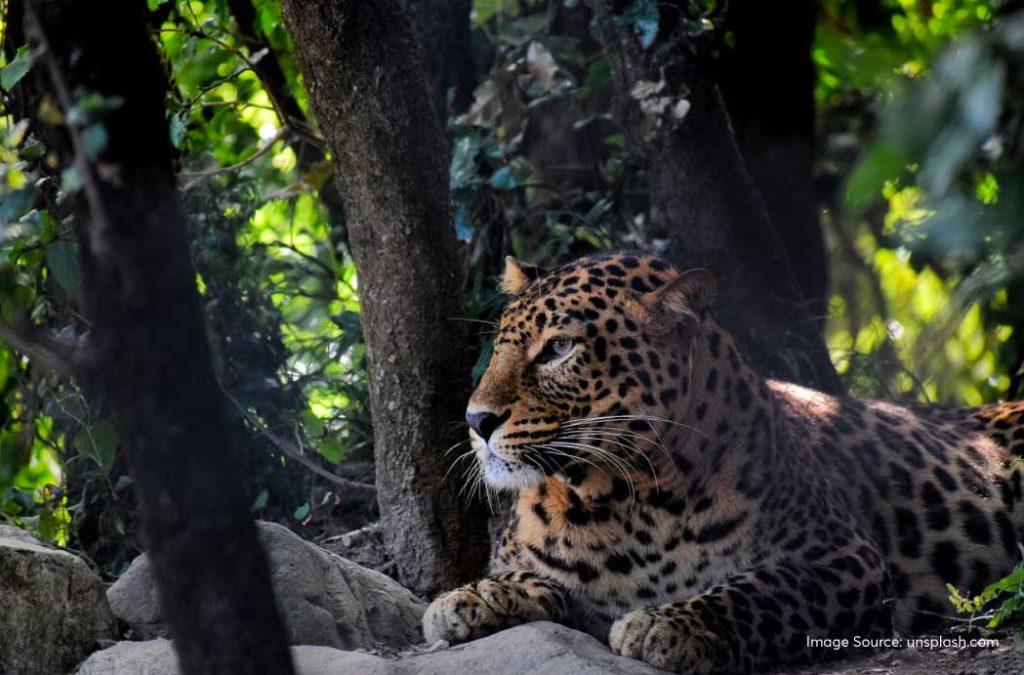
These are some of the Do’s and Dont’s that you need to follow when you go to Jim Corbett National Park. Note that these are very important for your own safety and to respect the life that dwells on those lands.
What should you be doing in Jim Corbett National Park? – The Do’s
- You cannot enter the park without a permit. Always book your permits in advance and do it only from the official website. If you are hiring a third-party agent, be sure to check their credibility.
- Hire a guide and ensure that he is officially registered.
- Tourists must follow a litter bag along with them to toss in empty water bottles, wrappers, or any form of garbage. Please refrain from throwing anything in the park.
- When you spot a wild animal, maintain a safe distance from it and listen to your guide
- Wear clothing that blends well with the colours of the forest. Preferably, olive green, khakis, brown, dusty pink, or dull mustard yellow. The agenda is to keep your attire inconspicuous.
- You can rent binoculars at the gate and protective hats are also for sale there. It is ideal to have them for a better experience.
- Keep your mobiles on silent mode or switch them off while you are on the safari trip.
What Should you not be doing in the National Park? – The Dont’s
- Do not smoke or light any fire.
- Do not try to feed the animals or throw anything at them.
- Do not litter
- Do not play any transistors, tape recorders, or music players in the reserve area.
- Do not scream when the animals approach. This will make them feel threatened and they might attack.
- Do not enter the safari zones in your own vehicles. You must use a safari jeep with a guide at any cost
- Safari permits are non-transferable. Do not try to lend them to someone else or resell them.
- Do not use flash when you are clicking pictures of the animals.
When are you going to visit Jim Corbett National Park then? Let us know in the comments section below!

